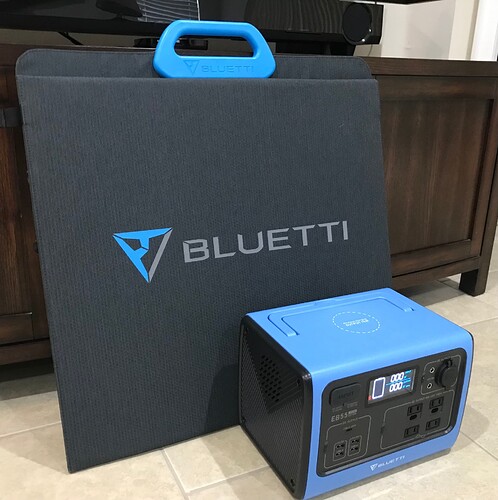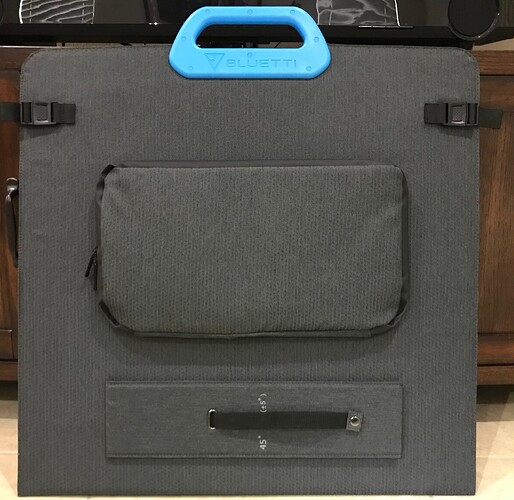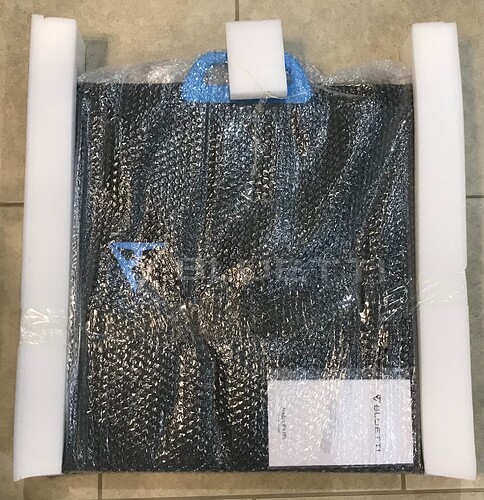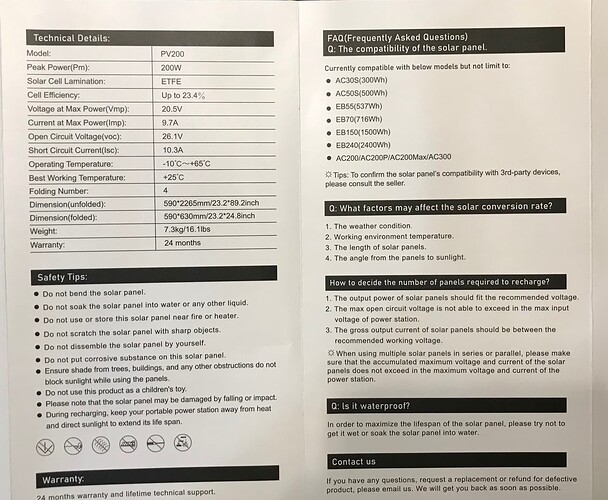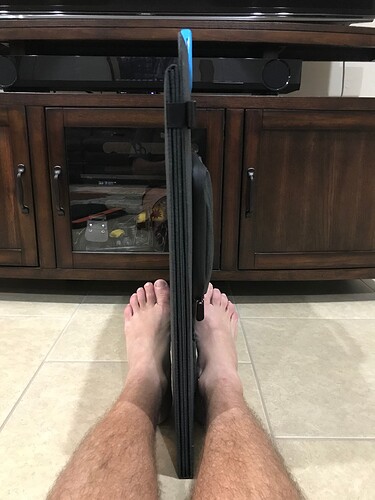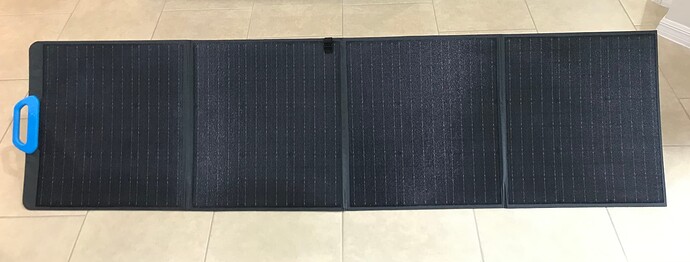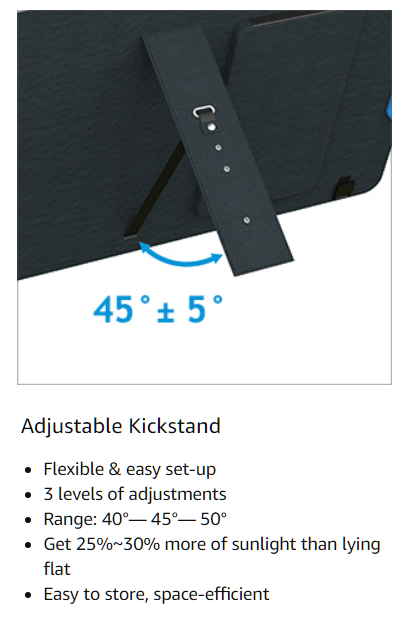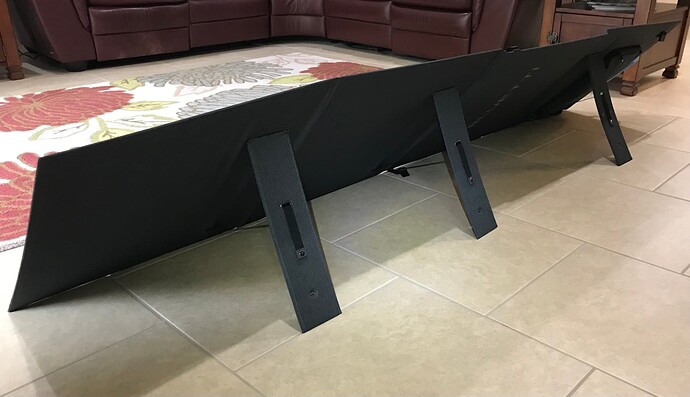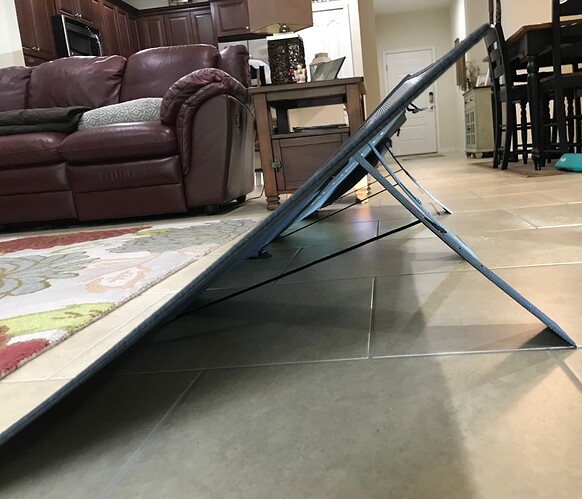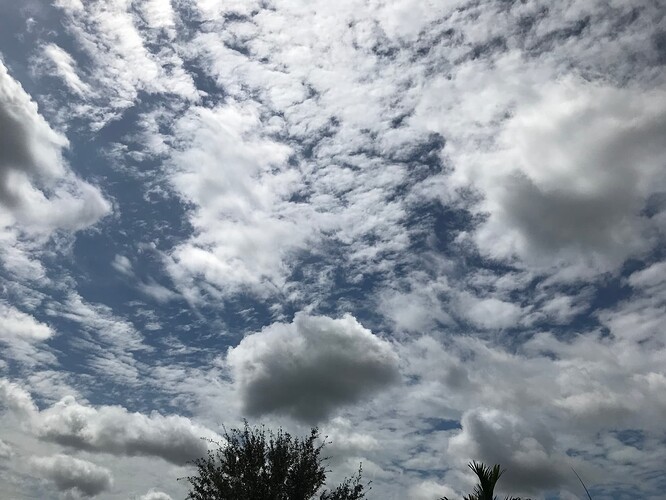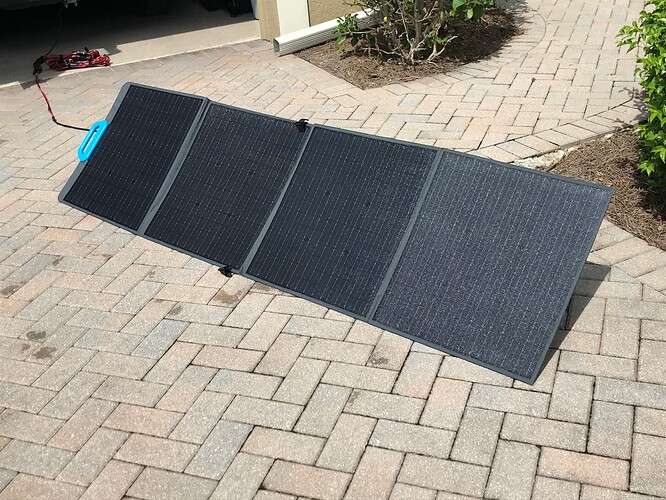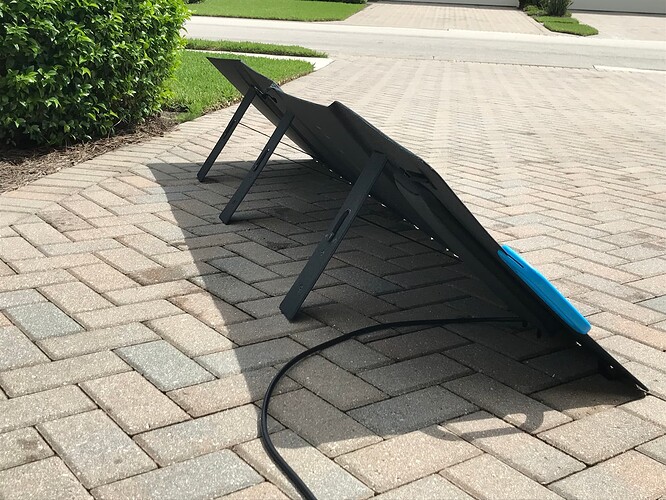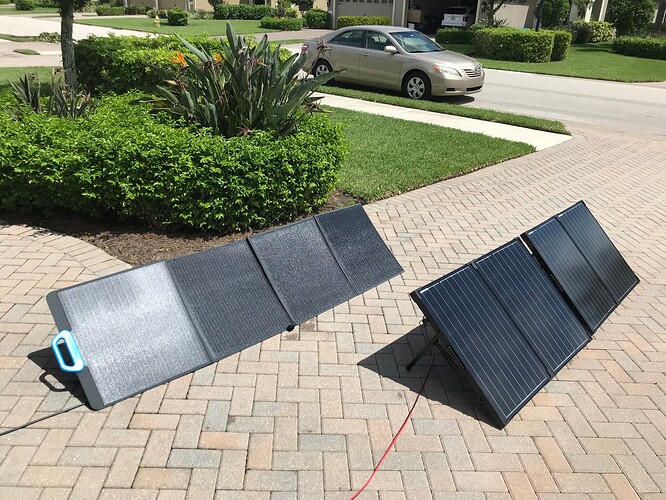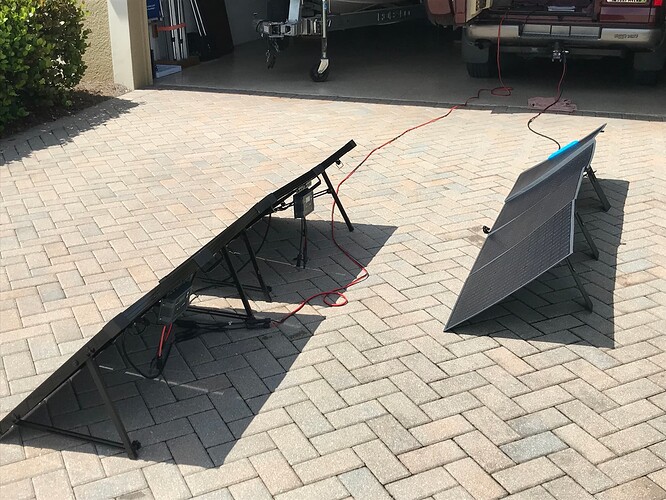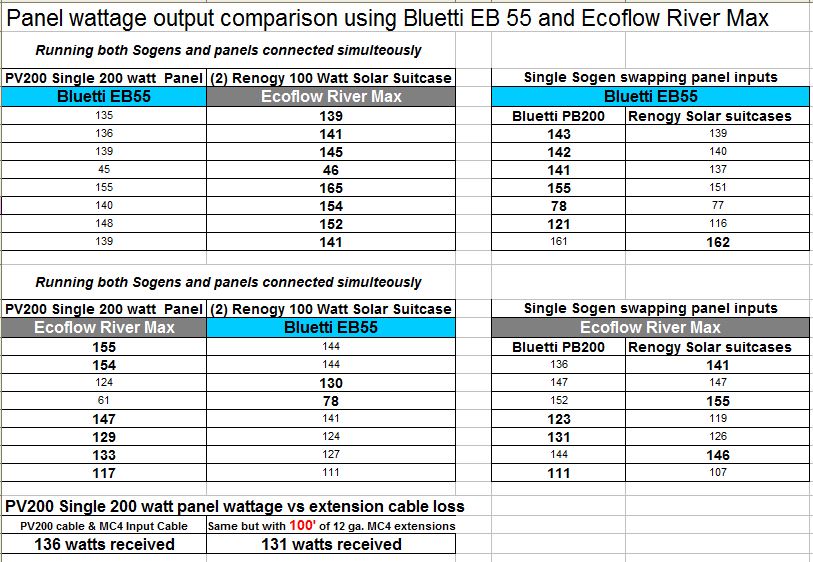BLUETTI PV200 - BIG POWER / HIGHLY PORTABLE
Bluetti PV200 200 Watt Output Capacity Portable Solar Panel
I received a single PV200 panel to use charging my Bluetti EB55 when camping and for emergencies… I wanted the PV200 because I had heard that it works well when partially shaded compared to other panels and also because it was highly portable and thin.
Prior to receiving this panel I owned and used Renogy hard suitcase panels, Bluetti SP120 watt folding, Acopower 120 watt folding, Allpowers 100 watt folding, Aiper 160 watt folding and Jackery 60 watt folding panels. My primary use is for emergency use and for camping / boating trips. Being user friendly and portable is a major criteria for me.
How long did it take me to get the thing?
I received my PV200 panel via UPS in approx. four days after order. I am located in SW Florida and the package was shipped from an Amazon warehouse in Ohio. The box arrived in great condition with no damage right on time with the tracking estimates. Inside the box the panel is protected by flexible foam inserts and wrapped in a plastic bag. A (2 year) warranty card was included as well as a multifold instruction manual.
The cable, what about the cable?
The PV200 includes a high quality 12 foot length cable with MC4 connections and is made of heavy 12 gauge wire. The cable is well fastened and sealed to the outlet box of the solar panel. Having the 12 ga. wire and MC4 connections make this panel usable with most sogens and can be connected in series or parallel to suite your situation.
How big is this thing anyway?
The four section panel folded dimensions are approx. 23” x 23” X 2” with a weight of 16 lbs. This thing is anorexic super model thin. Unfolded the panel is approx. 86” x 23” with the blue handle extending a further 2” in length. Included is a picture of the PV200 compared to a Jackery Solar Saga 60 panel which is a very portable panel itself. When folded the panel’s attached handle allows easy carrying. The fabric appears to be of high quality and should give years of service.
How does it stand up when to use it?
There are three kickstands included that are held in place when folded by velcro. When in use, the kickstands have a unique adjustable feature that allows varying the angle of the panel by using a snap and strap system. The adjustment system is simple, strong and allows angling the degree of the panel more than other systems to properly align with the sun. The kickstands are a must have and work well on the PV200.
Yeah, Yeah, Yeah, this is all fascinating, but how did it perform?
I wanted to see how the panel performes in several areas:
1-Wattage output
2-Wattage output directly compared to a pair of Renogy 100 watt rigid folding suitcase panels. The Renogy panels have been around a long time and are considered to be class leading for output and solid performance.
3-Operating under partial shaded conditions. Normal panels lose a huge portion of their output when only a tiny portion of the panel is shaded by a branch, shadow etc. The PV 200 panel is supposed to lose an approxiate percentage of the output equal to the amount shaded. Basically shade 25% then you lose 25% of the output. This is a huge improvement for campers and others that need to set up a panel that will not be receiving shadow free sunlight during the day.
The day I tested was full of high changing clouds and not the best by any means. I am in SW Florida and we get plenty of heat, variable sunshine and rain.
I received a high of 160 watts of charging my Bluetti EB55. (I used the panel again the next day with perfectly clear skies and received 161 watts so I would expect around 160 to 165 watts is going to be the max for this panel using the EB70 and EB55) The charging went perfectly and I had no issues other than the constantly changing cloud conditions. Open circuit voltage was measured at 24.77 and voltage under full load was 19.88. Voltage and amperage under load varied depending on the sun condition at the moment.
My next test was comparing a single, highly portable PV200 to a pair of solid Renogy 100 watt suitcase panels. The setup on the PV200 was light years easier with both time and weight. The PV200 simply required unsnapping two straps, unfolding the panel, deploying the kickstands and plugging it into the MC4 to XT60 charging connector. The process took about 90 seconds. The Renogy panels are much heavier, required removing them from their protective case(s), unfolding and deploying the square tube kickstands, connecting a parallel Y branch connector and then doing the same all over again for the second panel. At this point, I needed a 10 foot extension cable because the short cables attached to the Renogys would not reach anything except the parallel branch connector. The extension cable was then connected to the same type of MC4 to XT60 input cable on the second sogen.
I wanted to be able to see the real time charging inputs from both panels at the same time so I connected the PV 200 to the EB55 and the Renogy panel pair to an Ecoflow River 600 Max. Both Sogens were at about 0% state of charge when testing began. Attached is a chart showing results of both panel charging both sogens. The chart outlines each panel’s output into each sogen at the same moment. The panels were swapped with the sogens and testing repeated. With the variable sun situation it would have been impossible to take a reading from one panel attached to the EB55 and then disconnect it and connect the second set of solar panels. By the time the charge initialized and stabilized the readings would have no meaning due to changing sun situations.
My primary interest was to determine if the heavy and bulky but high quality Renogy panels could be replaced by a single and highly portable Bluetti PV200. From the testing data, it appears that there is little difference in charging watts between the hard panels and the new Bluetti PV200s. The PV200 panel performed at approx. the level of two Renogy 100 watt suitcase panels. The Ecoflow River did seem to draw somewhat higher wattages from both panel types which could be due to the higher input amperage limit of the Ecoflow and differences in the built in charge controllers.
As an added bonus, I performed a test showing the wattage loss of adding in a full 100 feet of 12 ga extension cable to the existing set up.
Finally I shaded portions of the PV200 panel and it indeed performed under partial shading well. If I covered 25% of the panels, the wattage output was reduced by approx. 25%. If I covered 50% of the panels, the output was reduced by 50%. When 25% of the Renogy panel was covered almost all charging stopped.
Opportunities for improvement……
There are no grommets on these panels and some users will want to hang the panels. If this is a must have, I would recommend going with the Bluetti model SP200 panels instead which have grommets for attachment points.
Add one more kickstand for a total of four instead of the included three. The panels work fine with the three but four would provide added stability. Additionally the kickstands could be wider and stiffer for improved stability as well. The small amount of added weight would not be noticed.
Conclusion
The Bluetti PV200 panel compares favorably with regard to charging performance of hard panels. If portability is a priority for you as well, you won’t go wrong with the PV200. The kickstands work well and the partial shading performance is a great feature for any deployment situation that involves not being able to set the panels in a clear location during the day. They make a great single panel charging solution for most of the smaller sogens (regardless of brand) as well as being able to be combined with multiple panels connected in series or parallel to suit your needs for larger scale operation.
